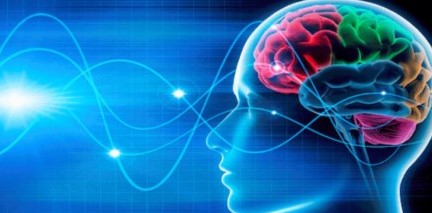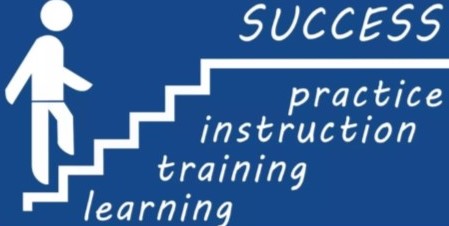Challenge accepted? The elements of Neuroplasticity.
Who loves a challenge? Some of us do and others not so much, and then there are the ones that will work better when they perceive that the rewards will benefit them! 😊
In the world of oral function, breaking poor or undesirable habits and retraining muscle function sounds like a real challenge…and it can be. However, anyone who works in the field of rehabilitative health care understands that there are a few key factors which need to be addressed to aid great success.

So, what is neuroplasticity? It’s the ‘ability of the brain to form and reorganise synaptic connections, especially in response to learning or experience or following injury’.
The brain has the ability to change all throughout one’s life, and it is this capacity which is harnessed during the approach to retraining incorrect muscle function during an orofacial myofunctional programme. (Let’s call it OM for short!) Making changes in the function of the oral muscles often starts off as a challenge, but later becomes the subconscious ‘normal’.
Gaining muscle strength to do this is primary to OM. Retraining of the muscle actions does not happen overnight, but when the client is well guided, has the right mindset and great at-home support (particularly in the case of children) then the results can be incredible, and life-changing!
So, let’s look at some of the key principals of neuroplasticity and what it means for successful outcomes.

Use it or lose it!
This is not a new principle at all. Muscle atrophy, strength and tone are all affected when the muscle is not used or used to its full capacity. Thankfully this can be built upon and leads us then to…
Use it and improve it!
Toning the muscles to function as best they can be is the first step, then building upon that strength and tone to learn (or re-learn) correct functions is the next step towards achieving a ‘new normal’ function. Both steps take time but are achievable within degrees. (Obviously, this will be different for every client.) The earlier these are addressed following surgery or injury the better.
Specificity!
In OM, exercise tasks are designed specifically to achieve the desired outcome. The goals we are working towards with the client are as individual as the tasks we set each client, and of course it needs to be.
Repetition matters! – it resets the brain.
Why do clients who work the hardest achieve the best results? Well, that old saying ‘the harder I work the luckier I get’ rings true with neuroplasticity too. Mindful movements repeated often – and the brain responds accordingly. Therefore it is difficult to achieve great outcomes without understanding the points mentioned above.
Intensity matters!
Unless a system is pushed beyond its comfort level, the results are not ‘learned behaviour’. So a systematic set of new movements with adequate strength and agility needs to be done with a ‘can-do’ attitude of expected improvement, and it is within this mindset that the real goals can be achieved. Remember, we aim for the ‘new’ to become the ‘norm’.
Time matters!
The best results are achieved early after surgery, injury or habit cessation, but its never too late. Capitalising on where the brain is going with the newfound freedom or range of movement has proved to deliver the best results for post-surgery outcomes.
From a myofunctional perspective, incorrect breathing, chewing, swallowing, oral resting positions, etc are learned behaviours which have developed in the individual as an adaptive response to challenges to normal airway or swallowing functions. We call this adaptation a ‘compensatory function’.
An example of this might be someone who has had an airway restriction for any length of time. In most cases, they have developed a subconscious mouth breathing habit in an effort to gain sufficient air to survive. This becomes their primary breathing technique. In a similar way, the person who has tethered oral tissues (e.g. a tongue tie) may develop a forward thrust swallow because the ability of the tongue to raise to the roof of the mouth to initiate correct swallow is restricted. Likewise, the prolonged use of a dummy (pacifier) or a thumb/finger sucking habit can alter the swallow pattern and this remains well after the habit is broken.
The earlier that this is dealt with the better if an interruption to what would previously be normal function has occurred. These interruptions would be things such as surgery, injury or habit cessation.
Salience matters!
The desire for improvement needs to be important or relevant to the client. (This is my favourite part of engaging with my clients!) The youngster who is learning to breathe correctly following tonsil and adenoid surgery and who also loves to play sports will appreciate and be motivated by the improved aerobic capacity they gain, more than the improved quality of sleep. The adult client may feel quite differently! Tapping into what makes the individual ‘tick’ is challenging but totally rewarding!
Age matters!
The age of the brain impacts is plasticity. Young brains ‘recover’ or learn faster than old ones BUT applying the same principles (as above) the good news is that old brains can still learn! A mouth-breathing toddler who may have required intervention surgery for airway issues causing SDB (sleep-disordered breathing) will make the switch to nasal breathing without much effort at all, however, an older child of 5 or 6 may be in need of some additional help in the form of myofunctional therapy to retrain some of those compensatory behaviours which, if not addressed, can result in ‘retained’ incorrect oral motor function leading to adverse oral conditions, including orthodontic problems.
Conversely, if a functional problem is not addressed before, during, or immediately following orthodontic treatment, there is a high possibility of relapse. More and more, orthodontic practitioners (the world over) are recognising the benefits of including myofunctional therapy in the long-term stabilisation of orthodontic outcomes for many of their patients.
Interference matters!
Sometimes compensation can impede ‘recovery’. In a similar vein to the point above, when an appliance is used to correct orthodontic issues, and the aetiology of the issues is not thoroughly evaluated, then the ‘compensatory habit’ may be retained, and the impact can slow down, delay or even undo the corrective work.
For example, we find that patients who retain mouth breathing habits following tonsil and adenoid surgery do not experience a significant reduction in asthmatic symptoms, or other effects of mouth breathing habits because the compensatory habit has not changed.
We are indeed unique and adaptable individuals, and with the right help, plenty of support and insight, we can achieve truly great outcomes.
Neuroplasticity…an important concept to understand and remember!
